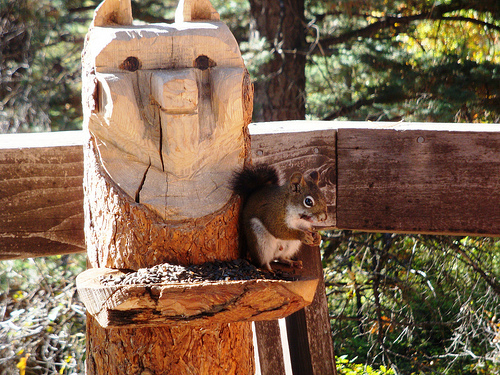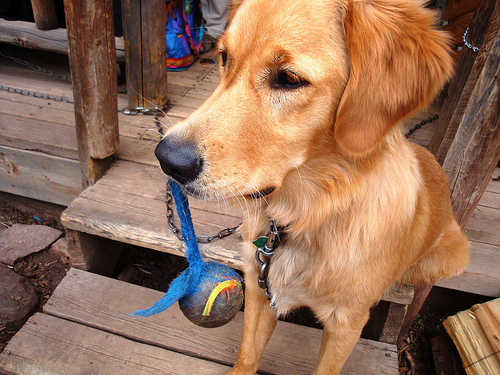Tuesday Tips: Nonfiction Proposal–Outline & Samples

The next part of the journey will be exciting!
Today is the last installment in my series on nonfiction book proposals. Over the past several Tuesday Tips I've covered some of the meat-and-potatoes of choosing topics, researching ideas, and putting together a winning nonfiction book proposal. While I write primarily about pets, the same ingredients for your nonfiction book stew are the same–it's just the seasoning and presentation that may vary.
The first week discussed the IDEA TREE followed by topic choice including where to find ideas and decide if they're viable. The third covered passionate picks and bio building–and then the holidays happened, so I took a week off. The next installment covered to query or not, what goes in a query or cover letter and how to approach an editor/agent. We've dissected the nonfiction proposal to find out the components and got up-close-and-personal with the nonfiction proposal OVERVIEW and the COMPETITION/MARKET SURVEY. Have questions about format? Find the answers here. Last week the topic was the AUTHOR BIO & PROMOTION. Today we complete the series discussing how to put together a nonfiction book outline, and what to include as samples.

Squirrel on a bear...you thought I was kidding.
THE BOOK OUTLINE
For fiction authors, this would be the synopsis. Wow–I could hear knees knocking as y'all read that horrible "synopsis" word! The bad news is, some of the same things apply in the nonfiction book proposal outline. The good news is–an outline isn't nearly as angst-worthy. In fact, you may already have much of the hard work done.
There are different schools of thought when it comes to the book outline, but since I'm writing this blog, you'll get my pick. Because even a squirrel-on-a-bear someone like me can do this.
See that last word in the topic slug above? The one that starts with an "o" and ends with an "e" — that one. Say it with me here. We're going to OUTLINE the book.
What other part of the book uses this technique. I'll wait. (turning head, whistling, tapping foot) Brilliant! That didn't take long at all, there are some very savvy squirrels writers reading the blog today. Yes, your TABLE OF CONTENTS very likely already is in outline form. Use it.
Every chapter gets listed. Within each chapter, the sections get listed. Refer back to the blog that discusses format to remind yourself how your book will be organized–by chapter, by parts, in an Alpha list, and whether it will include lists, charts, sidebars, illustrations and the like. Use these to populate, in broad strokes, the headings and subheads of your book outline.
For some formats it works well to include a 1-2 sentence description of each "part" of the chapter, or up to a paragraph or two for the entire chapter. Do what works best for your individual book. If you know, also include the approximate number of pages in each chapter, along with a bullet list of illustrations, graphs, lists or other value-added.

Maurice the Dragon-Muse puts samples wherever the #$%^&! he wants!
SAMPLES–WHAT, HOW MUCH, WHERE DOES IT GO?
With a fiction project the agent or editor wants to see the FIRST chapter(s) in consecutive order. That's not necessarily the case with nonfiction. Check the submissions guidelines since some request "up to three sample chapters." That means you can offer the first chapter, one from the middle, one from the end or however best shows off your work.
For example, several of my books are formatted with "up front overview chapters" in part one of the book, and then an "A-to-Z list of symptoms/conditions" in the last half. Therefore, I'd offer one chapter from that front matter–maybe "Nursing & Home Care"–and then one or two more from the alpha-listed chapters that are the "wow" grab-'em kind of topics like reversing paralysis or kidney transplants.
In my books the first chapter typically had quite a bit of material that I'd already included in the overview portion of the proposal. If that's the case with your proposed book, you may wish to choose something other than the first chapter–UNLESS that's specifically requested.
Your sample chapters go at the back of the proposal. Some folks include a TOC to the proposal itself in case the editor/agent wants to flip to a specific portion and read your bio, for example. I'm sure some editors read the samples before anything else, and only then (if they like it) go back and read the rest of your pitch. But for simplicity's sake, it's usually best to include all samples at the end of the package with any other samples.

Make a place for important samples--don't just let 'em unravel or dangle.
What other samples, you say? If you've published on the book's topic in articles, blogs or chapters in books, you can include them as supporting samples. That said, if those articles form the basis for entire chapters then–no. List them in credentials but you don't necessarily want the reader to see you've plagiarized yourself (or as a friend tells me, "re-sourced yourself.")
When your book will include illustrations and photos that are necessary to the book concept–you're a photographer and it's a coffee table format–by all means, include samples. You may wish to include samples of a couple of different illustrators that you have in mind. Just remember that the publisher almost always chooses the illustrator for books, unless the author also is a professional artist.
Best wishes on putting together your nonfiction book proposal. What have I left out? Do you have questions about further details? What has worked for you in the past? Please share!
I love hearing from you, so please share comments and questions. Do you have an ASK AMY question you'd like answered? Stay up to date on all the latest just subscribe the blog, "like" me on Facebook, listen to the weekly radio show, check out weekly FREE PUPPY CARE newsletter, and sign up for Pet Peeves newsletter with pet book give-aways!
Filed under: Writing Advice & More Tagged: Amy Shojai, cat books, dog behavior, http://www.shojai.com, nonfiction book proposals, pet books, pets, writing, writing advice, www.amyshojai.com











